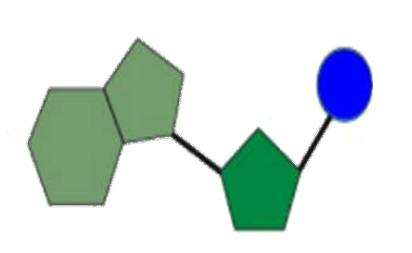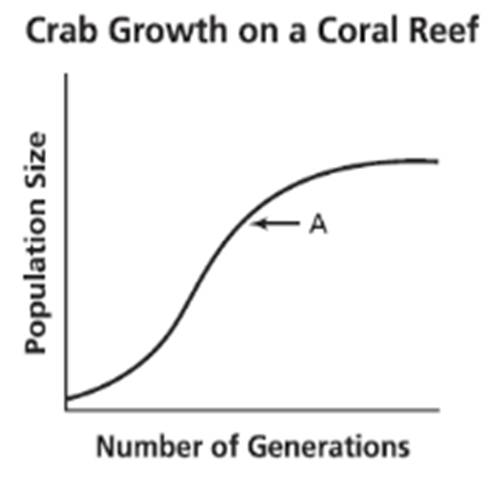Bio 1 Warm-up Quiz #5

- 1.
Which molecules store and transmit genetic information?
- A.
Lipids
- B.
Proteins
- C.
Nucleic acids
- D.
Carbohydrates
Correct Answer
C. Nucleic acidsExplanation
Nucleic acids store and transmit genetic information. They are composed of DNA (deoxyribonucleic acid) and RNA (ribonucleic acid), which are responsible for carrying and transmitting genetic instructions for the development, functioning, and reproduction of all living organisms. Nucleic acids contain the genetic code in the form of sequences of nucleotides, which are the building blocks of DNA and RNA. This genetic information is crucial for the synthesis of proteins and the overall functioning of cells and organisms.Rate this question:
-
- 2.
The energy in the food produced by autotrophs or taken into the bodies of heterotrophs must be changed into a for mthat cells can use. The energy-transferring molecule used by cells is ___.
- A.
RNA
- B.
DNA
- C.
ATP
- D.
NADP
Correct Answer
C. ATPExplanation
The energy in food needs to be converted into a usable form for cells. The molecule used by cells for energy transfer is ATP (adenosine triphosphate). ATP is a high-energy molecule that is produced during cellular respiration and can be readily used by cells to carry out various metabolic processes. It acts as a "currency" for energy transfer within cells, providing the necessary energy for cellular activities.Rate this question:
-
- 3.
Which biological macromolecule contains nitrogen bases?
- A.
Nucleic acids
- B.
Carbohydrates
- C.
Lipids
- D.
Saturated fatty acids
Correct Answer
A. Nucleic acidsExplanation
Nucleic acids are the biological macromolecules that contain nitrogen bases. These nitrogen bases, namely adenine (A), thymine (T), cytosine (C), guanine (G), and uracil (U), are the building blocks of DNA and RNA. Nucleic acids play a crucial role in storing and transmitting genetic information in living organisms. Carbohydrates, lipids, and saturated fatty acids do not contain nitrogen bases and do not have the same genetic function as nucleic acids.Rate this question:
-
- 4.
The molecule illustrated here is a monomer of what macromolecule?
- A.
Carbohydrate
- B.
Lipid
- C.
Nucleic acid
- D.
Protein
Correct Answer
C. Nucleic acidExplanation
The molecule illustrated here is a monomer of a nucleic acid. Nucleic acids are polymers made up of monomers called nucleotides. These monomers consist of a sugar molecule (in this case, the molecule shown in the illustration), a phosphate group, and a nitrogenous base. Nucleic acids, such as DNA and RNA, play a crucial role in storing and transmitting genetic information in living organisms.Rate this question:
-
- 5.
Water (H2O) is an example of a molecule whose atoms are held together by which of the following?
- A.
Covalent bonds
- B.
Hydrogen bonds
- C.
Ionic bonds
- D.
Metallic bonds
Correct Answer
A. Covalent bondsExplanation
Water (H2O) is an example of a molecule whose atoms are held together by covalent bonds. In a covalent bond, two atoms share electrons in order to achieve a stable electron configuration. In the case of water, the oxygen atom shares electrons with two hydrogen atoms, forming two covalent bonds. This sharing of electrons allows the atoms to be held together in a stable molecule.Rate this question:
-
- 6.
Water is a polar molecule which has a slightly positive side and a slightly negative side. It would be a good solvent for which of the following substances?
- A.
Metals
- B.
Non-polar oils
- C.
Polar pigments
- D.
Unreactive noble gasses
Correct Answer
C. Polar pigmentsExplanation
Water is a polar molecule due to its bent shape and the difference in electronegativity between oxygen and hydrogen atoms. This polarity allows water to form hydrogen bonds with other polar molecules. Polar pigments, being polar in nature, would be attracted to the slightly positive and negative ends of water molecules, making water a good solvent for them. On the other hand, metals, non-polar oils, and unreactive noble gases do not have the necessary polarity to form strong interactions with water molecules, making water a poor solvent for these substances.Rate this question:
-
- 7.
Which of the following best explains why water has the property of cohesion?
- A.
The positive region of one water molecule is attracted to the negative region of another water molecule
- B.
Water molecules stack neatly because of their shape
- C.
Water molecules attract each other due to like charges
- D.
Water molecules repel each other due to like charges
Correct Answer
A. The positive region of one water molecule is attracted to the negative region of another water moleculeExplanation
Water has the property of cohesion because the positive region of one water molecule is attracted to the negative region of another water molecule. This attraction is caused by the polarity of water molecules, where the oxygen atom is slightly negative and the hydrogen atoms are slightly positive. This polarity allows water molecules to form hydrogen bonds with each other, creating a cohesive force that holds them together.Rate this question:
-
- 8.
Which of the following is NOT a property of water?
- A.
Non-polar solvent
- B.
Adhesion
- C.
Cohesion
- D.
High specific heat
Correct Answer
A. Non-polar solventExplanation
Water is a polar solvent, meaning it can dissolve polar substances but not non-polar substances. Adhesion refers to water's ability to stick to other substances, while cohesion refers to water's ability to stick to itself. Water also has a high specific heat, meaning it can absorb and retain a large amount of heat without a significant change in temperature. Therefore, the correct answer is "Non-polar solvent" as it is not a property of water.Rate this question:
-
- 9.
Consider the aquatic food chain shown above. What would most likely result if a waterborne bacteria caused the death of most of the minnow population?
- A.
Decrease in both algae and zooplankton populations
- B.
Increase in both zooplankton and perch populations
- C.
Increase in both perch and hawk populations
- D.
Decrease in both perch and hawk populations
Correct Answer
D. Decrease in both perch and hawk populationsExplanation
If a waterborne bacteria caused the death of most of the minnow population, it would result in a decrease in both perch and hawk populations. This is because minnows are a primary food source for perch, and perch are a primary food source for hawks. With a decrease in the minnow population, there would be less food available for perch, causing their population to decrease. As a result, there would also be less food available for hawks, leading to a decrease in their population as well.Rate this question:
-
- 10.
Consider the graph to the right. Which statement best describes what is happening at point A?
- A.
Population growth decreases as individual crabs get older.
- B.
The population is stabilizing as it approaches the carrying capacity.
- C.
Destruction of habitat is causing a decline in the population of crabs.
- D.
The introduction of a new predator is causing a decline in the crab population.
Correct Answer
B. The population is stabilizing as it approaches the carrying capacity.Explanation
The graph shows that as time progresses, the population of crabs at point A is reaching a plateau, indicating that the population growth is slowing down and stabilizing. This suggests that the population is approaching its carrying capacity, which is the maximum number of individuals the environment can sustain. Therefore, the statement "The population is stabilizing as it approaches the carrying capacity" best describes what is happening at point A.Rate this question:
-
Quiz Review Timeline +
Our quizzes are rigorously reviewed, monitored and continuously updated by our expert board to maintain accuracy, relevance, and timeliness.
-
Current Version
-
Mar 22, 2023Quiz Edited by
ProProfs Editorial Team -
Sep 30, 2013Quiz Created by
Christopher Mack
 Back to top
Back to top



.jpg)
